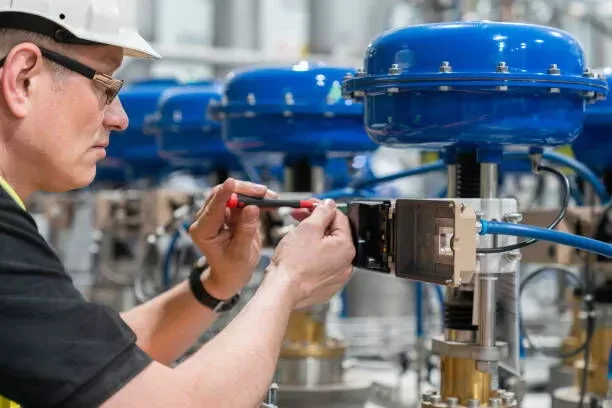Notifications

4 minutes, 18 seconds
-11 Views 0 Comments 0 Likes 0 Reviews

Understanding Control Valve Controllers: Types, Functions, and Industrial Importance
China Control valves are critical components in industrial systems, used to regulate flow, pressure, or temperature within a pipeline. They work in conjunction with controllers, which adjust valve positions based on feedback from the process to maintain optimal operating conditions. These controllers compare real-time process data—such as pressure or flow rate—with target setpoints and adjust the valve accordingly.
The term "control valve controller" may also refer to "valve pilots" or "pressure pilots"—devices used especially in pressure-regulating systems. A pilot valve senses pressure changes and sends a signal to the actuator, prompting the valve to open or close to maintain system stability.
Pneumatic control valves use compressed air to operate actuators that adjust the valve position. These are widely used in industries where durability, speed, and cost-efficiency are essential.
How They Work:
A pneumatic pilot monitors system pressure and directs air to the actuator.
The actuator, typically diaphragm- or piston-driven, moves the valve stem.
A positioner ensures accurate valve placement, based on pilot signals.
Types of Positioners:
Mechanical Positioner: Manually calibrated, reliable, and simple.
Digital/Smart Positioner: Microprocessor-controlled, enabling auto-calibration, diagnostics, and integration with control systems.
Advantages:
High reliability and fast response
Lower cost and maintenance
Ideal for oil & gas, water treatment, and chemical industries
Electric control valves use electric motors for actuation and are preferred in applications requiring precise, programmable control.
How They Work:
The electric actuator receives commands from a controller, such as a PLC or RTU.
A feedback loop, using sensors or encoders, allows the actuator to fine-tune the valve position in real time.
Electric Controllers & Pilots:
Integrated with automation systems
Capable of handling complex logic and multi-sensor input
Provide enhanced control over process variables
Advantages:
High precision
Seamless integration with SCADA/DCS systems
More energy-efficient (no compressed air needed)
Widely used in HVAC, pharmaceuticals, and water treatment
| Component | Function |
|---|---|
| Control Valve | Regulates fluid flow in the system |
| Actuator | Moves the valve based on controller signals |
| Controller | Compares setpoints to actual data and sends control signals |
| Positioner | Fine-tunes valve movement for precise control |
| Pilot | Aids in pressure regulation by influencing actuator movement |
| Feedback System | Provides real-time process data for continuous adjustment |
Enhanced Process Stability: Maintains consistent flow, pressure, and temperature.
Operational Cost Savings: Reduces waste and improves energy efficiency.
System Longevity: Minimizes wear on components by preventing fluctuations.
Improved Safety: Prevents system overpressure or failure by maintaining proper limits.
Control valve controllers—whether pneumatic or electric—are vital for efficient, safe, and cost-effective process control. By responding to real-time data, they regulate flow and pressure precisely, supporting smooth industrial operations. With the integration of smart technologies like digital positioners and PLCs, these systems continue to evolve, enabling greater automation, accuracy, and reliability.
As industries shift toward smarter, more automated operations, the role of control valve controllers becomes even more crucial in driving productivity and sustainability across diverse sectors.Know more about Google SEO Directory

